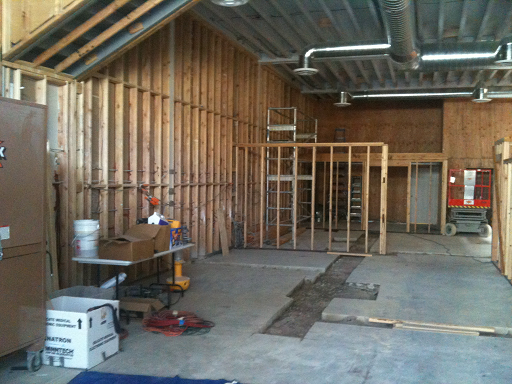By Jessica Gordon Nembhard
Grassroots Economic Organizing Newsletter (GEO) is involved in an exciting new project. GEO has organized an online forum - the Worker Co-op Development Forum - that has been exchanging ideas over the several months about worker co-op development models. These exchanges have begun to identify best practices in the U.S., and the strengths and challenges of diverse models, especially as to who is served by and who controls the development process. We also invited short articles highlighting models and addressing questions about worker co-op development that have been published in this special issue of GEO. The economic times are ripe for spreading democratic business models, especially worker co-operatives. We are seizing the moment.
We asked forum participants to describe their development model, and to answer such questions as:
- Who initiates the development?
- What are the primary goals?
- Who funds the work?
- What are the keys to actually developing a worker-ownership culture?
- What is unique or novel about your strategy?
- How do you know if you are succeeding?

The buildout of an Arizmendi Bakery in 2010.
The articles in this issue provide answers to many of these questions from the perspective of specific, and contrasting, worker cooperative development strategies. The first article, by GEO editors, "Development Models and Approaches," summarizes GEO's understanding of the variety of models and strategies that exist for developing worker cooperatives in the U.S. We have constructed a preliminary table to illustrate the variety of models and their major components. We also include quotes from the online forum responses. We end the piece with a selected list of articles about worker co-op development from GEO's archives. The remaining articles cover efforts, mostly on the East Coast, to support employee rights, provide more effective job training (through business ownership) and higher quality employment, and to address poverty.
The second article, "Legal Entity Options for Worker Cooperatives," by Edward W. De Barbieri & Brian Glick, is excerpted from a forthcoming legal guide on forming worker cooperatives developed by Urban Justice Center, National Employment Law Project, and Fordham University School of Law Community Economic Development Clinic. Ted and Brian describe two major legal structures, the LLC and the worker cooperative corporation, for constituting worker cooperatives, and compare and contrast the two.
Third, we highlight the "Arizmendi Association Cooperative Development Model," in an article contributed by Joe Marraffino. Joe provides specific details about how the worker-co-op led Arizmendi Association development model in the Bay Area works. (Joe previously contributed an article on the Arizmendi replication model in GEO Newsletter Vol 2, Issue #3.)
The next article, by Vanessa Bransburg, describes how the Center for Family Life in Brooklyn, got into the business of helping low-income immigrants in their neighborhood develop worker cooperatives. "The Center for Family Life: Tackling Poverty and Social Isolation in Brooklyn with Worker Cooperatives" describes the process the Center went through to find alternatives to the traditional job readiness model it had used for 20 years.
The fifth article on "The Connecticut Cooperative Business Academy Pilot Project," submitted by the CCBA Steering Committee, describes a unique new initiative to develop co-ops which address rural poverty in Connecticut through both a structured eight month program and the creation of a peer support network.
"Labor Unions And Worker Co-Op Development" by Mary Hoyer, Liz Ryder, Frank Adams, John Curl, and Deb Groban Olson of the USFWC UnionCo-ops Committee, is a short piece reminding us of the role unions have played throughout history in creating and supporting worker cooperatives.
Adam Trott's article, "The Valley Alliance of Worker Co-operatives Development Model: Questions and Working Solutions," describes VAWC's principles for developing worker cooperatives through a series of questions about worker control over worker co-op development. Adam challenges the readers to focus on ways to develop a strong ownership culture in worker cooperatives, through development projects designed and funded by other worker owners.
Roy Messing, of Ohio Employee Ownership Center (OEOC), describes using worker co-op development in succession planning in "Transitioning a Private Business to Worker Cooperatives - A Viable Community Development Tool." Roy emphasizes the laws that support such transitions and the ways worker co-ops contribute to community development.
There was much discussion over the online forum of new developments at WAGES. We asked outgoing Executive Director Hilary Abell and her staff to reply to a set of questions about their model and their recent exploration with corporate sponsorships. We reproduce Hilary's responses in "WAGES Model and the Value of Partnerships."
Last but equally provocative, Margaret Bau challenges us to rethink the viability of worker ownership alone as a strategy to increase the quality of home care jobs and services, in "Worker Co-ops in Long Term Care." In a surprising and thoughtful exploration of what is often pegged "women's work," Margaret suggests that long term home care and nursing worker co-ops can be strengthened by creating multi-stakeholder cooperatives instead - given all the challenges of establishing living wages and permanent jobs in this industry.
Be sure also to look at list of selected articles on worker cooperative development models from the GEO archives.
Readers, you see what a rich, thought provoking, and exciting special (and double) issue this is! We have a total of ten articles, and this is just the tip of the iceberg on this subject. GEO held a one-day mini-conference - "Advancing the Development of Worker Cooperatives" - during the Eastern Conference for Workplace Democracy in Baltimore, on July 8, 2011, to continue these discussions with a limited number of worker co-op developers involved in our online forum. We plan to publish proceedings from the discussions during the conference, so that we can continue to share this exciting dialogue with our readers. The conference addresses many of the questions raised during the online forum and in this issue; and will focus on ways to understand and evaluate the successes of worker cooperative development strategies.
Thanks to all of you who have participated already, and to those who will participate.
The permanent link to this issue is http://geo.coop/node/626.
About the Author Jessica Gordon Nembhard is a political economist and Associate Professor of Community Justice and Social Economic Development in the Africana Studies Department at John Jay College, City University of NY. She is also a member of the GEO Collective, the US Federation of Worker Cooperatives, the Eastern Conference for Workplace Democracy, and the US Solidarity Economy Network; and a member of the Leadership Team of Organizing Neighborhood Equity (ONE) DC (a community organizing CDC)
Jessica Gordon Nembhard is a political economist and Associate Professor of Community Justice and Social Economic Development in the Africana Studies Department at John Jay College, City University of NY. She is also a member of the GEO Collective, the US Federation of Worker Cooperatives, the Eastern Conference for Workplace Democracy, and the US Solidarity Economy Network; and a member of the Leadership Team of Organizing Neighborhood Equity (ONE) DC (a community organizing CDC)
Citations
When citing this article, please use the following format:
Jessica Gordon Nembhard (2011). Introduction to Worker Cooperative Development Models. Grassroots Economic Organizing (GEO) Newsletter, Volume 2,Issue 8. http://geo.coop/node/626.

Add new comment